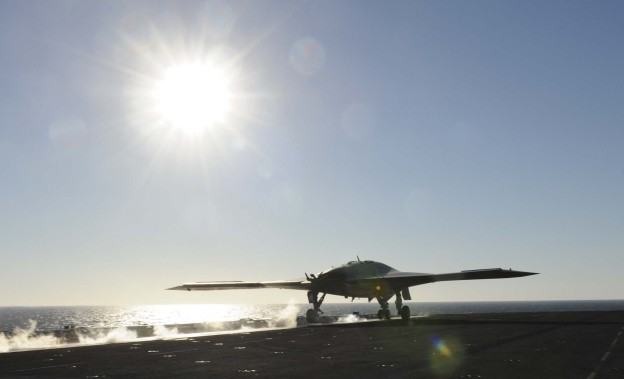
The U.S. Navy may be forced to revamp its acquisition strategy for the Unmanned Carrier Launched Airborne Surveillance and Strike (UCLASS) aircraft program if the House of Representatives’ version Fiscal Year 2014 National Defense Authorization Act (NDAA) sticks.
But the bill must still pass through the Senate and conference committees before the President signs it into law —likely next week.
“The Secretary of Defense may not acquire more than six air vehicles of the unmanned carrier-launched surveillance and strike system prior to receiving milestone B approval for engineering and manufacturing development and low-rate initial production,” the document states.
The Congressional directive would throw a monkey wrench into the Navy’s plan to field as many as 24 aircraft—enough for about four carriers air wings — by 2020 before the program formally receives a Milestone B approval.
Some in Congress and industry have described the Navy’s acquisition plan for UCLASS to USNI News as “atypical”, but others have gone as far as to call it, “absurd.”
As it stands, the defense authorization bill also mandates new cost and schedule reporting criteria for the UCLASS program.
The Pentagon must submit a cost and schedule report every 90 days after the program enters a Milestone A technology development phase until it gets receives Milestone B approval to begin major engineering work and low rate initial production (LRIP).
The report must include the current cost and schedule, and must disclose any deviations from the previous cost and schedule. The Pentagon must also include an explanation for any changes.
The House version of the Fiscal Year 2014 NDAA would also require the Pentagon to include individual components of the UCLASS systems—such as the air vehicle or the control segment—as separate line items in future budget submissions.
Additionally, the bill would require the Government Accountability Office (GAO) to review the UCLASS program every year until the program enters full-rate production.
However, the Senate has not yet passed the NDAA nor have the two versions of the bill been reconciled in a conference committee.
Should the President sign a version of the 2014 NDAA into law that includes the House provision, it could force the Navy to revise the UCLASS acquisition strategy, industry officials told USNI News. That in turn could once again delay the UCLASS request for proposals (RFP).
A draft RFP was expected around the middle of December, but industry sources said that the document has once again slipped due to ongoing high-level reviews that must be completed prior to its release.
The Navy has estimated it could cost up to $3.7 billion between 2014 and 2020 for the initial design and fielding of the aircraft.





